The annual Christmas Bird Count was held in Trinidad and Tobago on 2 January 2012. The count has traditionally been held at four locations in Trinidad – Asa Wright, Caroni Swamp, El Tucuche and Morne Bleu – and, as last year, I decided to join the Morne Bleu group.
The day got off to a good early start with this large Barn Owl (Tyto alba) at about 4:00am in Barrackpore.
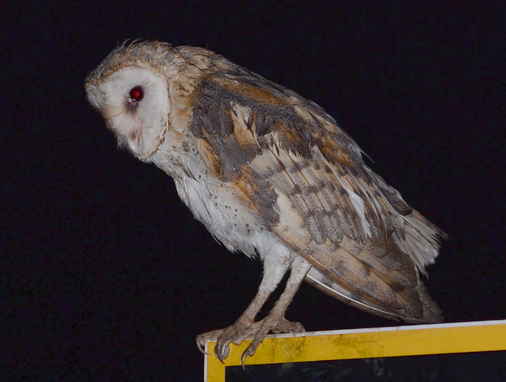
Barn Owls have a universal distribution and more than 20 different subspecies are known to exist throughout the world. The sub-species found in Trinidad & Tobago, Tyto alba hellmayri, is also found over much of northern South America. This owl can be found relatively easily at night in open country where exposed perches are available. (such as a signboard in this instance). Good locations for this species include playing fields and along the roadside in sugar-cane fields, rice fields and marshland (for example, the Trantrail Road in Valsayn and the S.S. Erin Road near Debe).
Two hours later and the entrance to Morne Bleu’s Radio Tropospheric Scatter Station finally appeared after a final sharp bend in the road. At the top of the hill a small group had already assembled. Unfortunately, much of the view that is usually enjoyed at the overlook was blocked by overgrown vegetation. Great Antshrikes, Golden-crowned Warblers and several Collared Trogons were observed and this lone Hepatic Tanager (Piranga flava), a Morne Bleu “specialty” was seen feeding on moths.
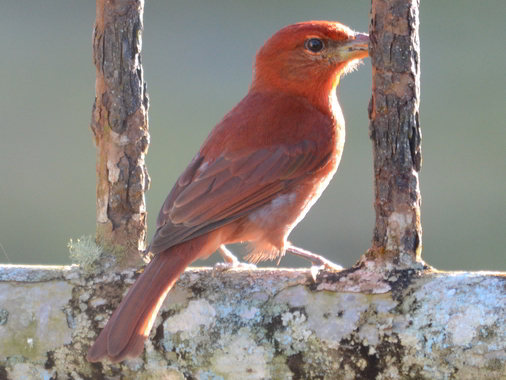
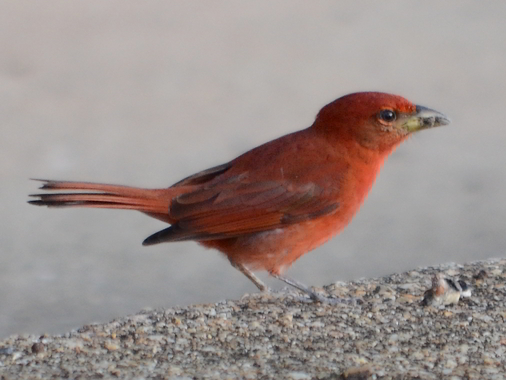
This highland Tanager is distinguished from other red tanagers by its overall brick red plumage, dark bill and legs (Note: The Hepatic Tanager has now been reclassified as a member of the Cardinal & Grosbeak family). It is only likely to be confused with resident species like the Silver-beaked Tanager or Red-crowned Ant-Tanager and migrant species like the Summer Tanager or Scarlet Tanager (both of which are rather rare visitors)
Other bird species present included Bay-headed Tanagers, Palm Tanagers, a Scaled Pigeon and a Gray-headed Kite but not much else of note was seen. There seemed to be an absence that morning of the many moths that are usually encountered at Morne Bleu and which many bird species have learned to exploit as a food source. This absence might account for the relatively low diversity of bird species there that morning.
We proceeded to Las Lapas, stopping along the way to conduct point counts. This added forest species such as Purple Honeycreeper, Golden-olive Woodpecker and Green Hermit to the growing list. At Las Lapas a female America Redstart (Setophaga ruticilla) was found feeding along the roadside.

This migrant Warbler is a common visitor to the mangroves and woodlands of Trinidad and Tobago during the northern winter.
High overhead a pair of Bat Falcons (Falco rufigularis) called to each other as they rode the strong winds in search of prey, occasionally returning to a dead tree to rest.
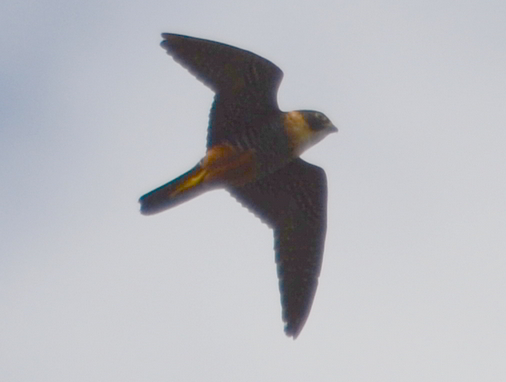
This small attractive falcon gets its name from its principal diet of bats which are caught in flight. They will often eat the bats while still flying but may also return to a convenient perch to consume their catch. Besides bats, they will also feed on insects and small birds that they catch.
Heading down the Las Lapas trail we caught glimpses of Gray-throated Leaftossers as they left their nest burrows in the trail’s embankment. Euler’s Flycatcher, White-flanked Antwren and White-necked Thrushes were also seen along the way.
In case anyone grew tired of counting birds they could count butterflies – literally.
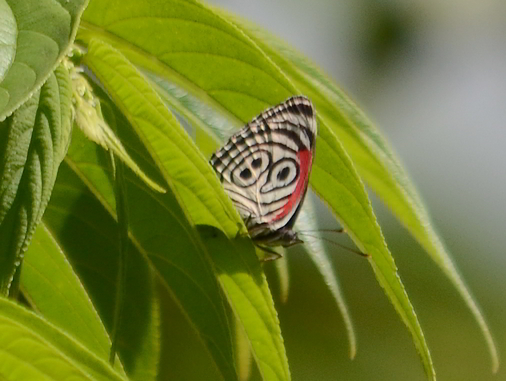
Known locally as the “89” butterfly for the remarkable numerical pattern on the underside of its wings, Diaethria clymena is widely distributed in Trinidad and is commonly seen in proximity to Trema micrantha trees on which their caterpillars feed.
Not commonly seen however, is this gorgeous male Summer Tanager (Piranga rubra).

Related to the aforementioned Hepatic Tanager, the male Summer Tanager has brilliant red plumage and a yellow bill. It is a migrant from North America on passage further south to the South American mainland (Note: The Summer Tanager has now been reclassified as a member of the Cardinal & Grosbeak family).
As the time wore on we decided to call it a day. Back at the head of the trail, as we rested under the shade of an avocado tree, two Yellow-tufted Prepona (Prepona laertes) (referred to by Barcant as the Purple King Shoemaker) were observed feeding on the sap exuded from a cut in the tree’s bark. Also attempting to join the feast was a Red Cracker (Hamadryas amphinome) (referred to by Barcant as the King Cracker), another “sap sucking” species.

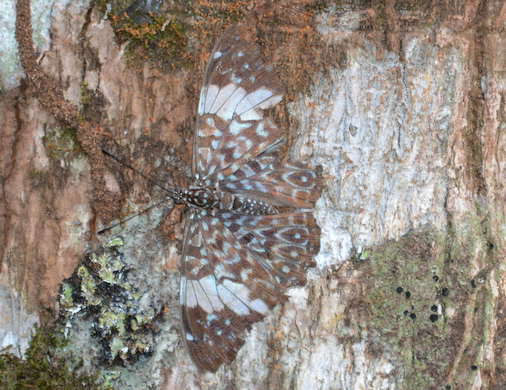
The presence of these insects may have caught the eye of this gorgeous male Collared Trogon (Trogon collaris) which perched briefly in the tree before flying up to pluck some unseen food morsel from the branches and then flying off.
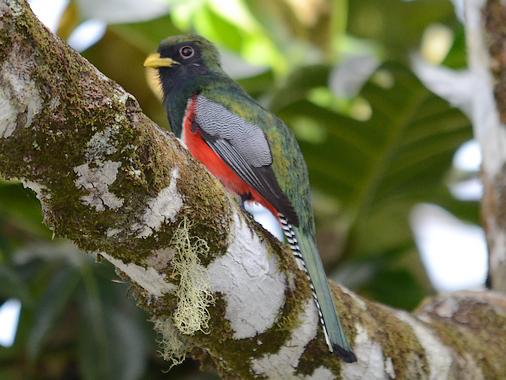
It was also time for us to leave as we ended a productive and enjoyable morning. Hopefully the new year will bring many more rewarding experiences for all of us as we continue to explore the natural environment of Trinidad & Tobago.